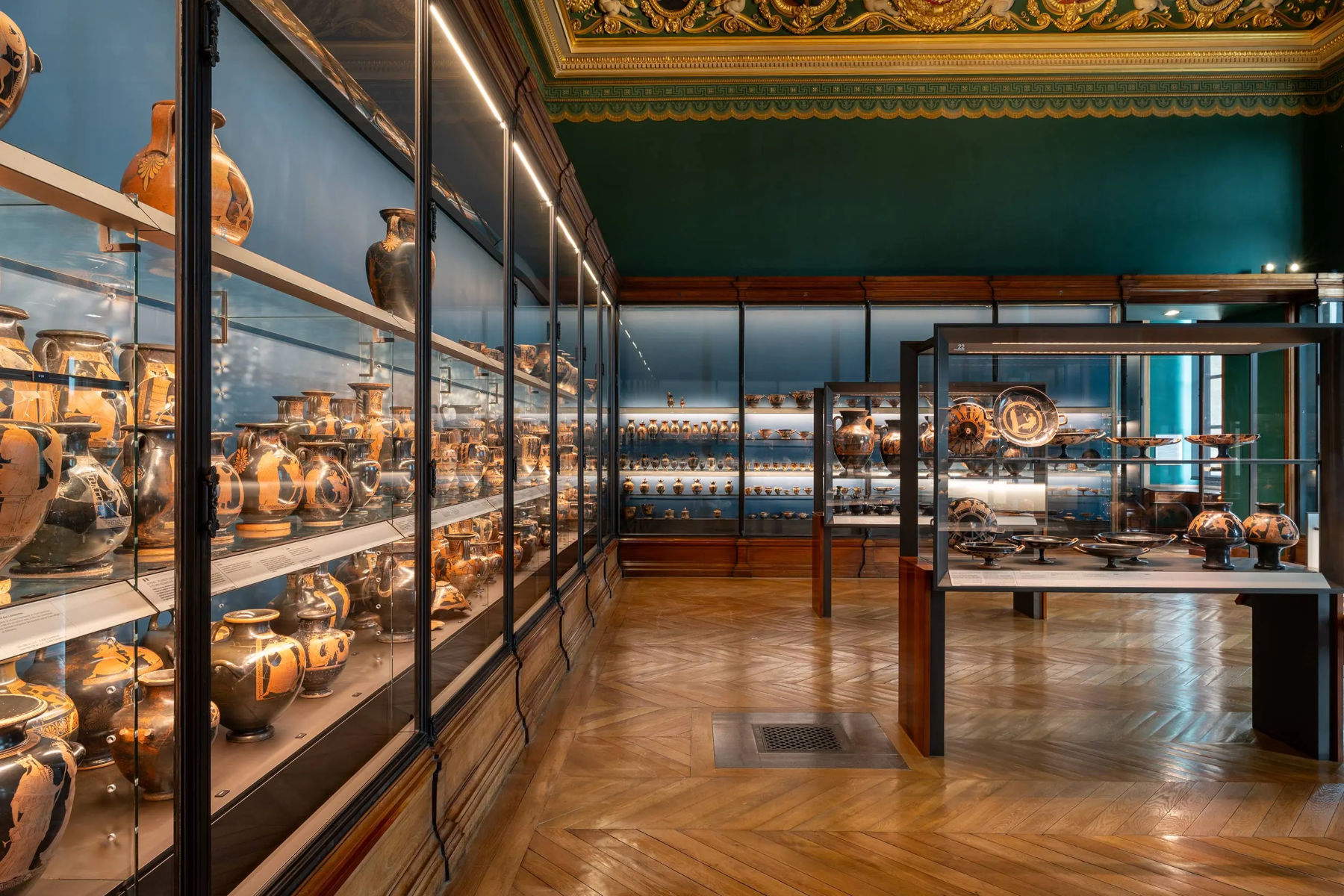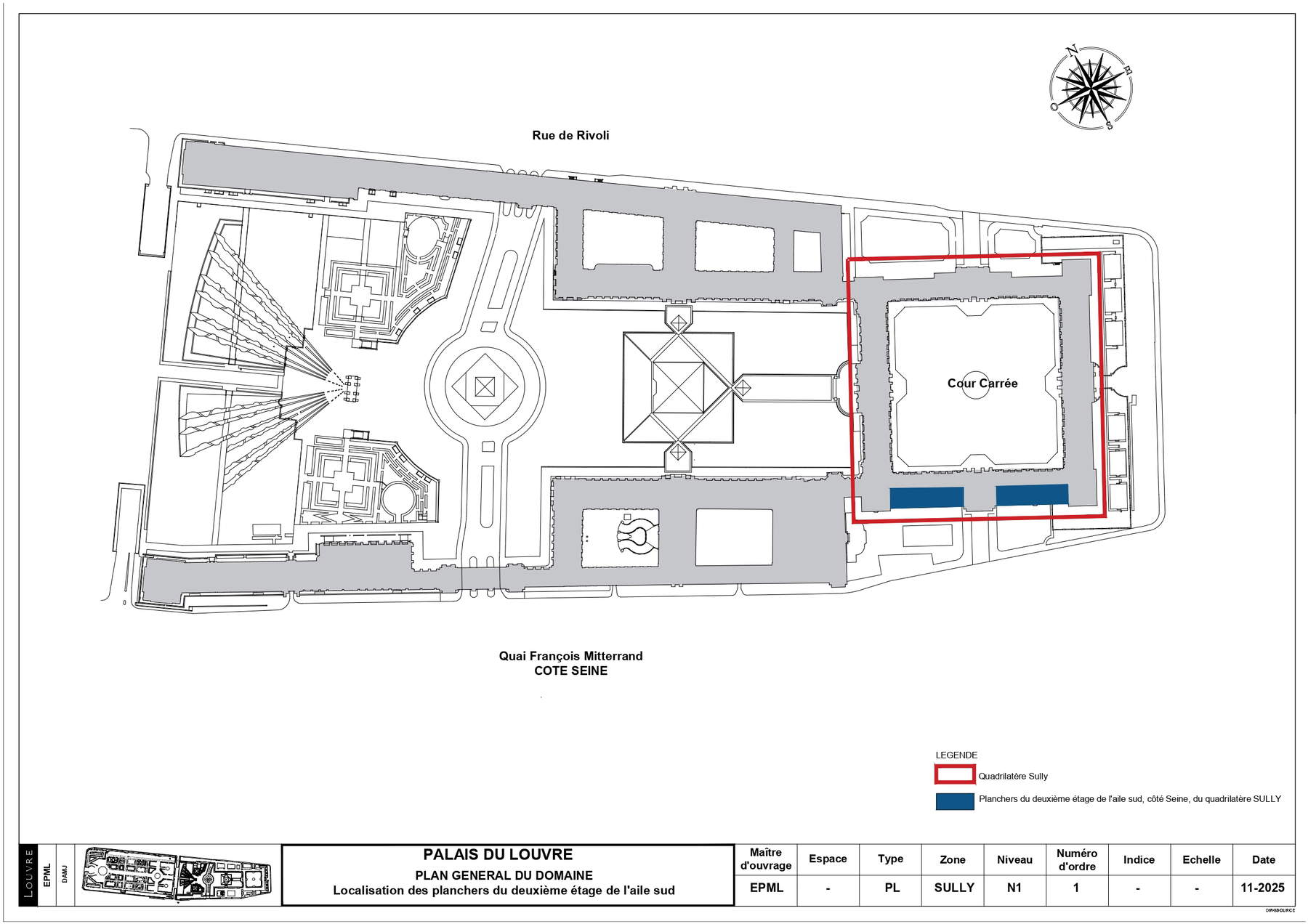Another shingle falls on the Louvre: the museum has announced the preventive closure of some spaces in the south wing of the Sully Quadrilateral and the Bell Gallery (also reported on the museum’s official website), located on the second floor of the same wing following a new technical report indicating an unexpected structural deterioration. The measures, announced on Nov. 17, 2025, affect in particular the second floor, which has been under specific monitoring for years due to the architectural complexity and interventions carried out in the 1930s, making the floors more vulnerable than other areas of the museum complex. On Friday, Nov. 14, the Établissement Public du Musée du Louvre (EPML) in fact received a new report from a specialized technical study in charge of analysis on the building. The document notes the increasing fragility of some of the beams supporting the floors of the second floor, a development considered recent and difficult to predict in previous investigation campaigns.
But what do we know about the recently closed Campana Gallery? Its spaces house a vast collection of vases, cups and objects that offer a comprehensive overview of ancient Greek ceramics. The tour, organized as a kind of encyclopedia, covers a chronological span from the 9th to the 1st century B.C. and includes all the main types, techniques, and centers of production. The introduction to the gallery presents three fundamental aspects of the Greek vase, forms, techniques and iconography, through a display that integrates tactile devices and multimedia materials dedicated to the myths of ancient Greece. The Campana Gallery is named after Marquis Giampietro Campana (1807-1880), a collector who in the 19th century assembled one of the largest private collections in Europe, consisting of thousands of archaeological finds and numerous Italian works. In fact, to build his collection he purchased works in large quantities and organized archaeological excavations, amassing a patrimony that exceeded the possibilities of his financial means and his role as director of Rome’s Monte di Pietà. In 1857 he was arrested for financial irregularities, and his collection was seized and put up for sale. Among the main buyers were Tsar Alexander II and Emperor Napoleon III, who with personal funds purchased the bulk of the collection and destined it for French museums, including the Louvre and the Petit Palais in Avignon.


Currently, the gallery rooms have been hosting exhibitions since 1819, when the museum expanded its collections through archaeological discoveries and new acquisitions. Indeed, at that time, architects Charles Percier and Pierre Fontaine worked on numerous museum projects. In 1861, after the purchase of the Campana collection, Napoleon IIIincommissioned architect Hector Lefuel to rethink the layout. Ceilings painted between 1828 and 1833, dedicated to the patronage of French sovereigns, were retained. Among the figures represented appear Charlemagne, Louis XII, Francis I, Louis XIV and, in a fresco dedicated to the expedition to Egypt, even Bonaparte as a promoter of artistic and scientific research. Over time, some rooms were converted into study spaces and closed to the public in 2003 to function as a temporary reserve in the prevention plan against the flooding of the Seine, while recent lighting upgrades and the introduction of a map between rooms 655 and 654 improve the reading of the contexts of production and discovery of artifacts.
To date, the closure of the gallery comes amid a climate made more complex by a series of incidents involving the museum. After the theft of theFrench crown jewels, the French Court of Auditors published two reports criticizing the Louvre for the amount of spending devoted to the acquisition of works that rarely reach the exhibition spaces: only a quarter of the acquisitions in the past eight years are actually visible to the public. The reports also urge enhanced security, for which there is an 82-million-euro plan dedicated to protecting the site and upgrading surveillance infrastructure. This was compounded by the case of the two young Belgians who brought a portrait of themselves into the museum and hung it behind the Mona Lisa, evading controls. Faced with the findings, and following the recommendations of the architect in charge of historical monuments in charge of the Louvre building, the museum’s management decided to make the offices on the entire floor inaccessible as well. Some 65 employees will have to leave their posts within three days of the announcement so that additional checks can begin immediately. In parallel, the EPML has initiated a new series of investigations with the aim of clarifying the causes of the recent structural changes and defining the necessary interventions.

The fragilities found in recent weeks are therefore part of the Louvre - Nouvelle Renaissance project, presented by the President of the Republic on January 28, 2025. The program aims to secure and modernize the Sully quadrangle, considered a major architectural and historical ensemble within the museum. The initiative includes an overhaul of infrastructure, upgrading of facilities, and a reorganization of spaces, with the aim of ensuring more efficient management and a better reception of the public. The interventions of these days thus represent one of the first concrete steps of a redevelopment path destined to continue in the coming years.
 |
| Another shingle on Louvre: Bell Gallery closed due to structural problems |
Warning: the translation into English of the original Italian article was created using automatic tools. We undertake to review all articles, but we do not guarantee the total absence of inaccuracies in the translation due to the program. You can find the original by clicking on the ITA button. If you find any mistake,please contact us.